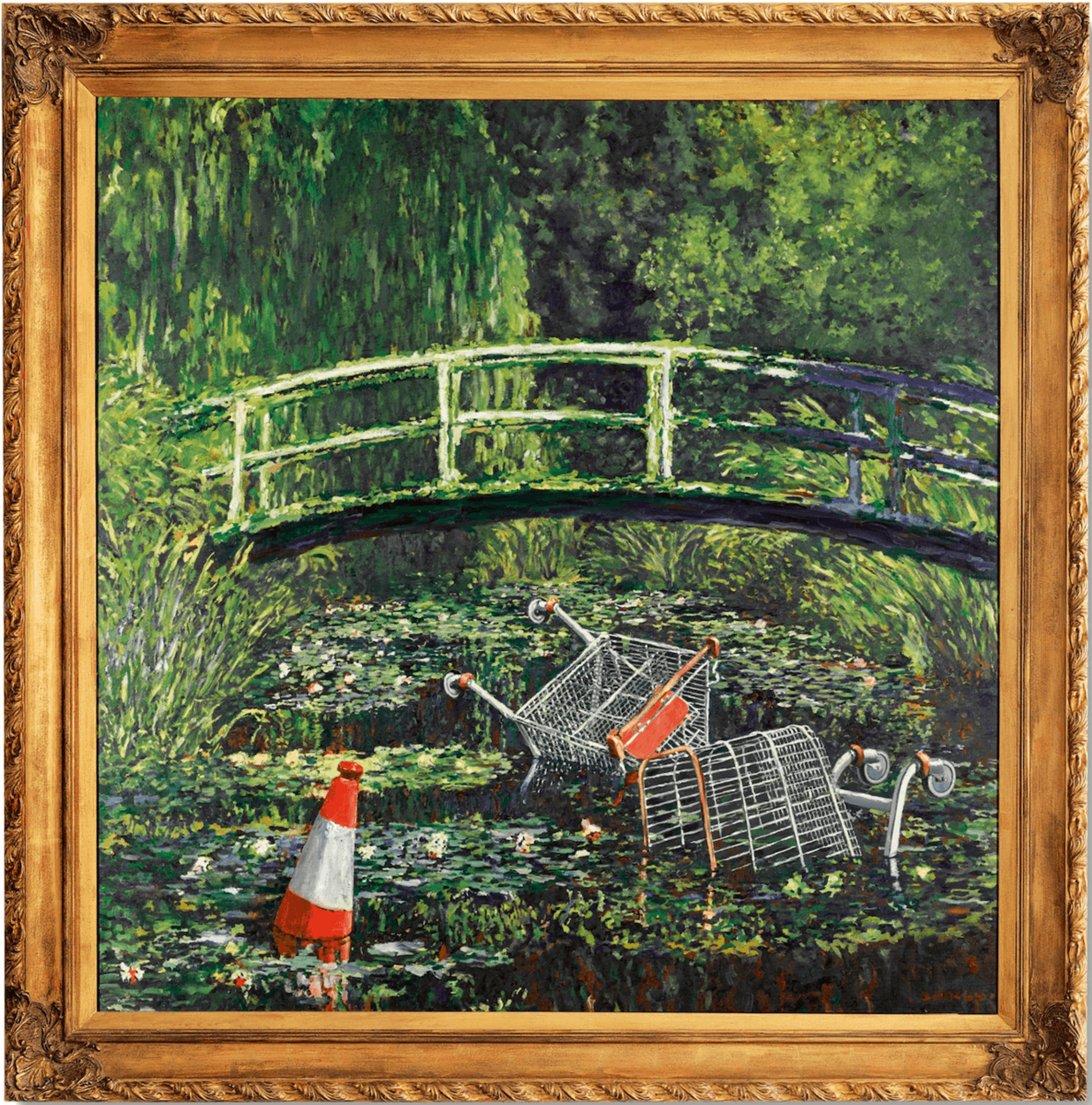Discovering All Regarding Oil Paintings: A Guide to Understanding Their Beauty and Value
Oil paintings have actually captivated audiences for centuries, offering a peek right into the creative proficiency of numerous eras. Their abundant background is linked with ingenious strategies and profound psychological expression. Comprehending the materials and techniques behind these art work can enhance admiration. Additionally, the marketplace for oil paints provides possibilities for collectors and financiers alike. As one discovers this interesting globe, the concern emerges: what makes an oil painting genuinely useful?
The Background of Oil Paint: A Journey Through Time
Although oil paint has origins that date back to old times, it truly prospered during the Renaissance, when musicians found its convenience and abundant shade capacity. Early examples can be traced to the 7th century, with techniques developing significantly across cultures. The tool ended up being prominent in Northern Europe in the 15th century, particularly via the jobs of musicians like Jan van Eyck, that pioneered its use for thorough realistic look and lively hues. This period marked a departure from tempera paints, enabling higher deepness and texture. As oil painting spread, it affected many artists, leading to work of arts by prominent figures such as Leonardo da Vinci and Rembrandt. The tool's heritage proceeds, shaping the art world well into modern times.
Comprehending Oil Repaints: Materials and Techniques
As artists discover the globe of oil paints, they run into a diverse array of products and methods that specify this medium. The main parts of oil paint include pigments, which give color, and drying oils, such as linseed, that bind the pigments and facilitate application. Numerous additives can modify the paint's structure and drying out time, improving versatility. Strategies like glazing, where clear layers are constructed up, and impasto, which involves using thick paint, enable various aesthetic results. Additionally, using brushes, combination blades, and also fingers can produce special textures and coatings. Comprehending these products and methods allows artists to totally share their creativity and achieve the wanted influence in their art work.
The Duty of Color in Oil Paints
Color plays an essential role in oil paints, affecting both aesthetic charm and psychological resonance. Recognizing shade theory essentials, including the partnerships in between hues, can improve an artist's capacity to communicate state of mind and environment. Additionally, understanding shade mixing strategies permits higher deepness and splendor in a painting's scheme.

Shade Theory Basics
Comprehending color concept is essential for artists dealing with oil paints, as it develops the foundation for producing unified and visually interesting compositions. Shade theory incorporates the study of how colors connect, the color wheel, and the partnerships in between key, additional, and tertiary shades. Artists use corresponding colors to boost contrasts and produce centerpieces, while analogous shades advertise unity and cohesiveness within an item. Additionally, the concepts of cozy and awesome shades affect the perception of deepness and space in a paint. Understanding these principles allows musicians to control shade successfully, directing the audience's eye and interacting their designated message. Proficiency of shade concept inevitably enhances an artist's capability to share emotions and ideas via their job.
Emotional Effect of Color
The emotional effect of color in oil paints plays a vital duty in exactly how visitors perceive and link with artwork. Colors evoke particular feelings and state of minds, affecting the customer's mood. For circumstances, cozy tones like reds and oranges can produce a feeling of heat and power, while great tones such as blues and greens commonly stimulate calmness or self-questioning. Artists purposefully choose shade schemes to improve narrative components, assisting the target market's emotional trip. The saturation and contrast of shades even more amplify these effects, drawing interest and developing focus. Eventually, the interaction of shades in oil paints not just improves their aesthetic charm yet also serves as an effective tool for emotional expression, improving the viewer's experience and interpretation.
Shade Combining Techniques
While lots of elements of oil paint contribute to the general make-up, mastering shade mixing methods is important for attaining desired results and depth. Shade blending can be approached through various approaches, including the additive and subtractive procedures. Additive blending involves incorporating shades of light, while subtractive mixing relies upon pigments, where colors blend to produce new tones. Artists commonly utilize a restricted combination to create harmonious jobs, understanding the partnerships in between key, second, and tertiary shades. Techniques such as glazing and scumbling additionally improve deepness and luminance. By skillfully mixing colors, a musician can stimulate emotions, create focal points, and attain a sense of realistic look, inevitably elevating the painting's aesthetic and emotional effect.
Famous Oil Painters and Their Iconic Works

Famed for their mastery of color and technique, oil painters have created a few of the most popular art work in history. Prominent artists like Vincent van Gogh astounded audiences with his stirring brushwork in "Starry Evening," while Claude Monet's "Impression, Sunrise" laid the groundwork for Impressionism. Leonardo da Vinci's "Mona Lisa" remains a long-lasting sign of creative wizard, showcasing his skill in capturing human expression. Rembrandt's "The Evening Watch" highlights his ingenious usage of light and shadow. Various other significant figures include Pablo Picasso, who changed modern art with his strong testing in jobs like "Les Demoiselles d'Avignon," and Georgia O'Keeffe, whose vivid depictions of landscapes and blossoms assisted specify American innovation. Each musician's unique style contributed significantly to the oil painting landscape.
Just how to Assess the Top Quality of an Oil Painting
Evaluating the high quality of an oil paint includes a careful evaluation of craftsmanship methods, as well as an evaluation of color and make-up. Observing brushwork, layering, and the application of paint can expose the artist's skill degree. Furthermore, the interaction of colors and the total setup of aspects add considerably to the paint's visual value.
Assessing Craftsmanship Techniques
A thorough assessment of workmanship strategies is essential for establishing the quality of an oil paint. Critics must initially check out the application of paint; thick, textured brushstrokes might recommend a knowledgeable hand, while overly uniform applications might indicate an absence of depth. oil paintings for sale. The layering method is likewise crucial; the presence of glazes and varied thickness can improve luminance and intricacy. Furthermore, the top quality of the products made use of, such as the canvas and pigments, plays a substantial function in sturdiness and total visual. Focus to detail in components like edges and changes between colors mirrors the artist's commitment to their craft. Ultimately, these techniques contribute to the paint's emotional effect and market price, acting as indications of the musician's ability and intent
Evaluating Color and Structure
While reviewing the quality of an oil painting, one need to concentrate on the interaction of shade and composition, as these components are basic to the art work's overall effect. Color choices can develop and stimulate feelings mood; as a result, the artist's combination should be checked out for consistency and contrast. A well-balanced make-up guides the audience's eye and produces a feeling of unity. Artists frequently utilize techniques like the rule of thirds or leading lines to enhance aesthetic interest. In addition, the use of light and shadow can add deepness, boosting the three-dimensionality of the painting. Inevitably, an effective oil painting weds shade and structure, involving the visitor and welcoming a much deeper gratitude of the artist's vision and strategy.
Caring for and Preserving Oil Paintings
Appropriate care and preservation of oil paintings is crucial for maintaining their integrity and durability. To protect these artworks, it is essential to display them far from straight sunlight, which can trigger fading and staining. Preserving a steady setting with controlled temperature and humidity additional aids in stopping damages. Cleansing ought to be done delicately utilizing a soft, completely dry towel, avoiding any rough chemicals that could harm the paint or varnish. Normal examinations for indicators of damage, such as flaking or breaking, are advisable. When transporting or storing oil paintings, proper padding and framework are essential to prevent physical injury. Inevitably, diligent treatment adds to the visual allure and value of oil paints with time.
The Marketplace for Oil Paints: Accumulating and Spending
Recognizing the marketplace characteristics for oil paints is crucial for investors and collection agencies alike. The value of these artworks is affected by different factors, consisting of the musician's reputation, historic relevance, and existing patterns. Collectors typically look for pieces that resonate directly while taking into consideration potential admiration in worth. Auctions and galleries work as primary venues for buying and selling, with rates varying based on need and rarity. Purchasing oil paintings needs research into the marketplace, as well as an understanding of credibility and provenance. In addition, emerging artists might supply possibilities for considerable returns, while established names can regulate high prices. Generally, a tactical method to accumulating can yield both visual enjoyment and financial rewards.

Regularly Asked Concerns
What Are the Environmental Influences of Oil Painting Products?
The environmental impacts of oil painting products consist of the release of unstable natural compounds (VOCs), dangerous waste generation, and source extraction for pigments. These elements add to contamination and ecological deterioration, raising worries among eco aware artists and customers.
Exactly How Do Various Canvases Impact Oil Painting Results?
Different canvases influence oil paint results considerably. Structure, absorbency, and surface quality can modify paint application, drying out times, and shade vibrancy. Artists frequently pick specific canvases to attain preferred effects and improve their creative expression.
Can Oil Paintings Be Restored if Damaged?
If damaged, Oil paints can indeed be brought back. Expert conservators utilize different techniques to fix tears, tidy surface areas, and address staining, ensuring that the art work preserves its original appeal and worth for future generations.
What Are the Indications of an Original Oil Paint?
The signs of an original oil paint consist of visible brush strokes, texture variations, and an uneven canvas weave more info (oil paintings for sale). Additionally, credibility may be verified through provenance, trademarks, and the existence of a varnish layer unique to oil mediums
How Has Modern Technology Influenced Modern Oil Paint Techniques?
Technology has substantially influenced modern-day oil paint techniques by presenting digital devices for planning, boosted materials for appearance and long life, and on the internet platforms for sharing and offering art, thereby increasing musicians' imaginative possibilities and target market get to. Oil paint has origins that date back to ancient times, it really flourished during the Renaissance, when musicians uncovered its flexibility and abundant shade possibility. The emotional impact of shade in oil paints plays an essential duty in exactly how customers link and view with artwork. While several elements of oil painting contribute to the overall make-up, mastering color mixing techniques is crucial for attaining preferred effects and depth. Assessing the high quality of an oil painting includes a careful assessment of workmanship strategies, as well as an analysis of color and structure. While evaluating the high quality of an oil painting, one must focus on the interplay of color and make-up, as these aspects are basic to the artwork's total effect.